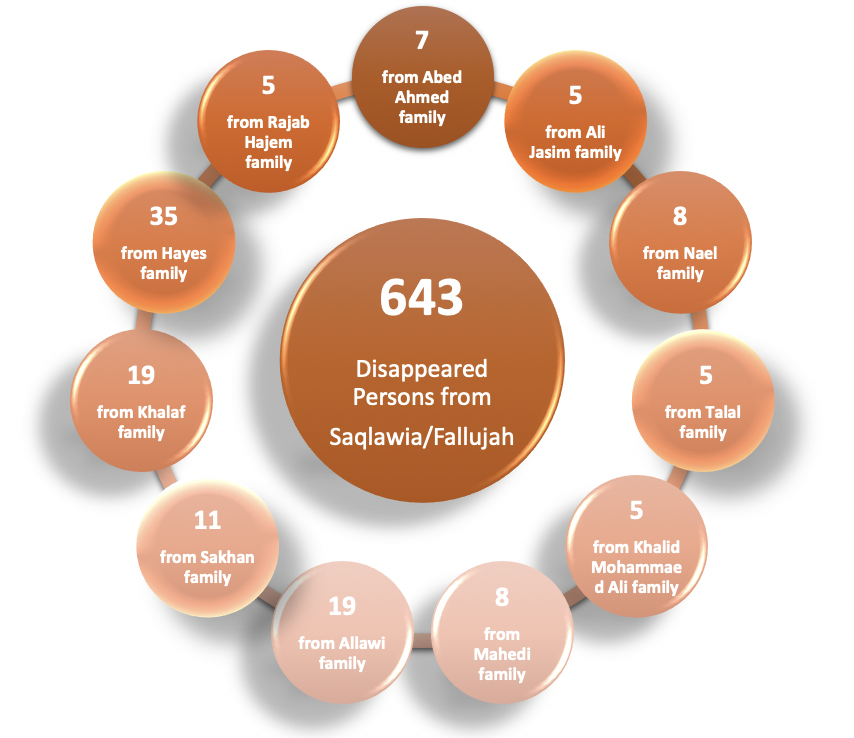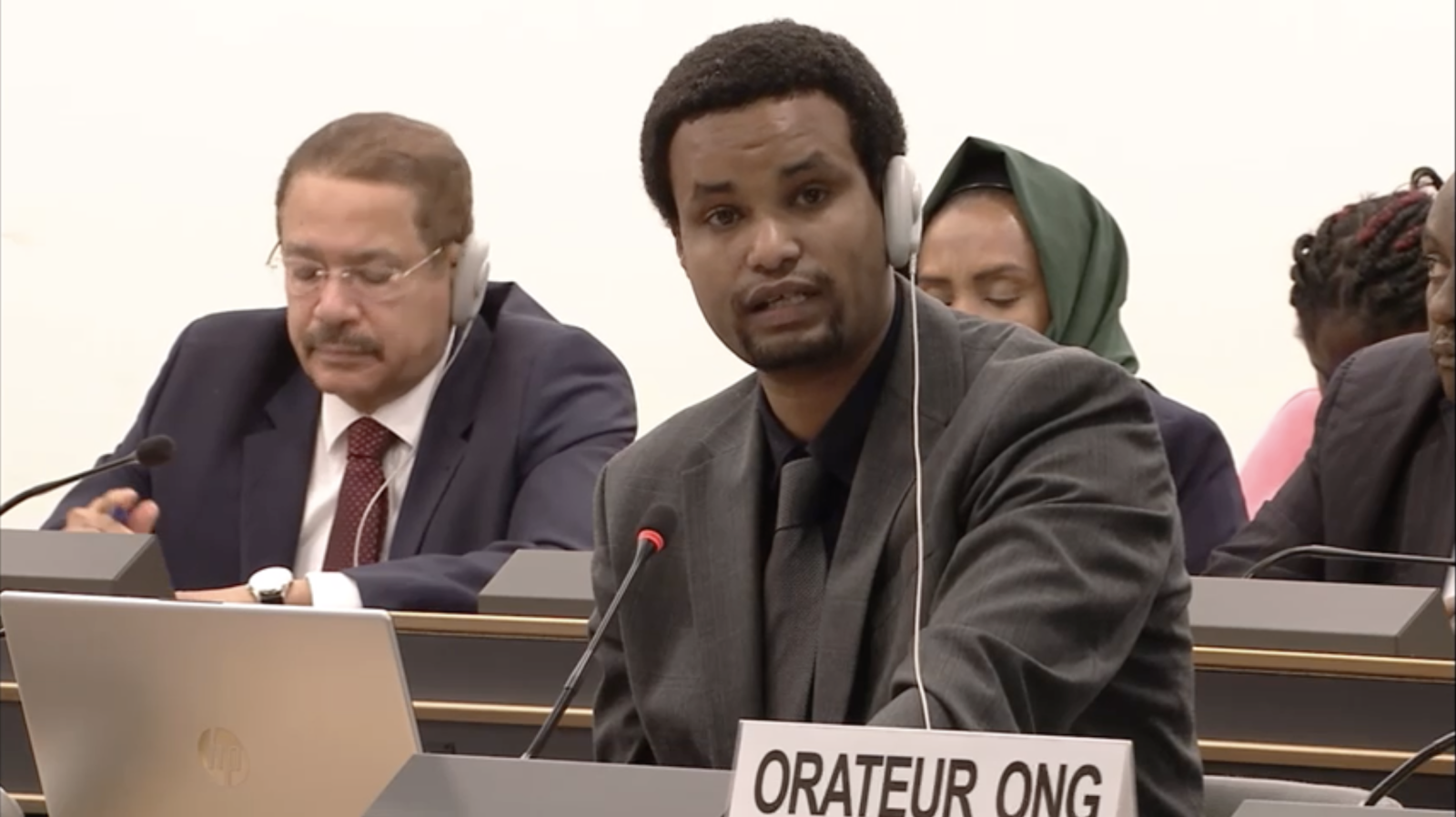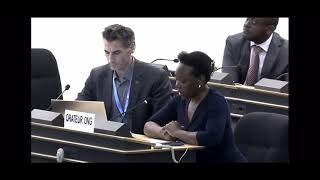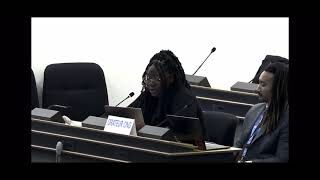Today, 9 September 2020, Geneva International Centre for Justice (GICJ) made representations at the 19th Session of the Committee of Enforced Disappearances (Committee) and submitted an update to its comprehensive alternative report previously submitted in March 2020 at the 18th Session, highlighting the persistent situation of enforced disappearances in Iraq.
GICJ reiterated to the Committee that the Iraqi government must be held accountable for the widespread and systematic enforced disappearances that have occurred in Iraq since 2003. GICJ informed the Committee of the enforced disappearances that had occurred in Iraq since the 18th Session, particularly the numerous enforced disappearances of activists and demonstrators since the nationwide demonstrations that erupted on 1 October 2019.
Urgent Appeals
GICJ advised the Committee of its urgent appeals, on 25 August 2020, to the High Commissioner for Human Rights, Michelle Bachelet, and to the Head of the United Nations Assistance Mission in Iraq (UNAMI) and Special Representative of the Secretary-General for Iraq, Ms. Jeanine Hennis-Plasschaert. The appeals concerned the surge in violations against activists and demonstrators in Iraq, including abductions, enforced disappearances and assassinations.
The appeals on 25 August 2020 were follow-ups to two separate letters sent 7 days prior, on 18 August 2020, to the High Commissioner and Special Representative respectively. The urgent appeal was necessary as additional abductions and assassinations occurred within the span of that week. GICJ stressed the imperative need for the intervention of the High Commissioner, the Special-Representative, UNAMI and all relevant UN human rights bodies. The primary demand in these letters is the urgent need for international action to dissolve the militias in Iraq as they are the main perpetrators of these grave human rights violations.
UNAMI/OHCHR Report of 30 August 2020
The Committee’s attention was further drawn to the specific violations recently reported and verified by both UNAMI and the Office of the High Commissioner for Human Rights (OHCHR). These reports followed GICJ’s appeals on 25 August 2020 for urgent action to address the situation in Iraq and included a joint UNAMI/OHCHR report of 30 August 2020 titled “Enforced disappearances from Anbar governorate 2015-2016: Accountability for victims and the right to truth” (UNAMI/OHCHR joint report). In this regard, the Committee was updated on the specific findings in the UNAMI/OHCHR joint report which verified the enforced disappearances that occurred in Anbar from 2015 to 2016.
GICJ further provided the Committee with its own findings of enforced disappearances in Anbar which revealed discrepancies in the UNAMI/OHCHR joint report. According to GICJ’s list, the numbers of victims found in Anbar from 2015 to 2016 is in reality much higher than the figures documented in the UNAMI/OHCHR joint report. The Committee was informed of the following:
i. From 2 to 6 June 2016 in the surrounding area of Fallujah, specifically Saqlawiya, our list indicates the names of 643 disappeared persons. GICJ included this list in its letter to the High Commissioner on 12 October 2016. From the list and from the graphic below, it is evident that the militias abducted men and boys belonging to the same families and tribes – thus clearly proving the sectarian agenda behind their actions. The graphic below depicts just a mere few of the families of the 643 disappeared persons and exemplifies how the militias target and eradicate entire generations of these families.

ii. GICJ also submitted information regarding the abduction of about 300 persons from al-Azrakiya, a village between Fallujah and Saqlawiya, on 2 June 2016. 150 people were killed on the spot and among them, an entire family of 35 people was reported to have been executed. The others disappeared.
iii. GICJ has documented 784 disappeared persons at the Bzebz bridge in May 2015. To flee the violence and control of ISIS in the year 2015, thousands of people attempted to get to the Bzebiz Bridge, from where they planned to cross the Euphrates to get to Baghdad. The militias controlled the check points around the area and abducted these persons, refusing to let them pass on the grounds that ISIS members were among them. No investigations were launched into the whereabouts of the disappeared persons. Members of Parliament confirmed the enforced disappearance of 2,200 persons.
iv. GICJ has also reported 865 confirmed disappeared persons abducted at a single checkpoint, namely Al-Razzaza.”
It is essential to note that the UNAMI/OHCHR report has come about after many years of GICJ’s hard work towards petitioning the High Commissioner and Special Representative to investigate and hold the Iraqi government to account for the gross, widespread, and systematic human rights violations running rampant in Iraq. However, the report fails to account for the disappeared persons in Iraq beyond Anbar during the period from 2015 to 2016.
Other Enforced Disappearances Documented by GICJ
Over the years, GICJ has reported extensively on cases of enforced disappearance in the al-Anbar, Diyala and Salah ad-Din Provinces. GICJ has previously reported these cases to both the Committee and the Working Group on Enforced or Involuntary Disappearances (Working Group). Long before the UNAMI/OHCHR reports were published, GICJ had documented lists of victims of enforced disappearances and submitted them to the High Commissioner, UNAMI, the Committee and the Working Group.
These lists do not represent all of those disappeared as GICJ is still receiving and verifying cases of disappeared persons in different areas in Iraq. The militias targeted and eradicated entire generations of families. Motivated by the sectarian agenda, the militias abducted these persons purely because they knew that they were Sunni Arabs. There was no conflict with these persons; they were innocent civilians. The main perpetrators of the enforced disappearances were Kata'ibHezbollah-Iraq, Asa’ib Ahl al-Haq and Badr brigade with the knowledge and cooperation of the Iraqi forces.
Apart from Anbar, GICJ has documented the following enforced disappearances throughout Iraq and has submitted this information to the Committee accordingly:
i. Diyala Province
Before the end of January 2015, the Iraqi military forces announced the full liberation of all the areas under ISIS control in the province of Diyala. Several militias, mainly Asa'ib Ahl al-Haq, Badr brigade, Saraya Al Salam and Kata'ib Hezbollah, took advantage of the tense situation to seize control of all the province’s resources. In doing so, they prevented a large number of displaced citizens from returning to their homes, particularly the residents of Muqdadiyah and the Sinsil Bassin which includes more than 33 villages.
Abductions, often targeting young people, were among the many methods used by militias to intimidate people. This campaign continued for more than a year, whereby hundreds of people had been abducted by governmental units and the militias, and to the present date, their whereabouts remains unknown. This was aggravated by other incidents in 2019 of forced displacement in several villages of Abi Sayda city. The events unfolding in Diyala were part of a systematic policy implemented by the Iraqi authorities through its affiliated militias that aimed at displacing Sunni Arab residents and to provoke a forcible demographic change within the Diyala province. As a result, the number of disappeared persons continues to grow each year.
ii. Salah ad-Din Province
By 14 November 2014, the Iraqi government declared that Baiji city was liberated from ISIS control. The destruction to the city forced much of the population to leave, under the pressure of the militias. The militias abducted more than 200 persons from the city and the surrounding villages. Their whereabouts remains unknown.
Al Dour was also recovered from ISIS by the Iraqi government and militias in the first week of March 2015. However, the militia, mainly Kata’ib Hezbollah, used the operation as a pretext to destroy most of the city. They burned houses, villages, and farms. They abducted 300 persons; most of them were men from specifically targeted families. Their whereabouts remains unknown.
iii. October 2019 Demonstrations
Throughout the anti-government demonstrations raging in Iraq since the beginning of October 2019, there have been a growing number of demonstrators, human rights defenders and journalists forcibly disappeared. It is almost certain that the killings and abductions are being carried out under Iraqi government orders, whether carried out by government security personnel or affiliated militias.
Enforced disappearances, especially of civil activists and members of the press, have become widespread. GICJ sources confirm that the total number of abducted at present exceeds 700 people and the whereabouts of many of them remains unknown, which caused and continues to cause much distress to family members. Most of the cases occur while these activists were returning to their homes from demonstrations.
Lack of Political Will and Deliberate Intimidation
GICJ further informed the Committee of the Iraqi government’s deplorable, malicious, and inexcusable conduct. The Iraqi government has failed to comply with its obligations under the International Convention for the Protection of All Persons from Enforced Disappearances (ICED) and has further actively advanced a campaign of threats and intimidation against demonstrators in clear violation of the right to peaceful assembly. Iraq has ratified ICED but has yet to provide an effective legislation to implement it. There is no clear interpretation as to the definition of “disappearance” in Iraqi law. To this day, no legal proceeding has been taken against perpetrators of enforced disappearances. The Iraqi government has not put in place any strategies to prevent enforced disappearances and it has failed to do anything tangible to search for disappeared persons. There is absolutely no political will and no legal procedure or process to ascertain the circumstances and whereabouts of disappeared persons.
Iraqi law does not provide for specific procedures for the search for disappeared persons and the investigation of alleged enforced disappearances. There are no provisions outlining how and to whom to report a disappeared person. Instead, there are differing procedures ranging from police, courts, the Ministry of Health, the Martyrs’ Foundation, and the Iraqi High Commissioner for Human Rights, each of which has different responsibilities. In short, there exists no clear competent authority to deal with cases of enforced disappearances. As a result, families face extreme difficulties when seeking to determine the fate and whereabouts of their relatives. The civil documentation required to register a case, with each institution having its own administrative procedures, often discourages the registration of cases with the authorities. Intimidation and fear impede the process, which is further aggravated by discrimination on ethnic grounds deriving from the sectarian system of governance that prejudices Sunni Arabs.
The Iraqi government has repeatedly announced at the Human Rights Council (HRC) and at the Committee that it cooperates fully with the UN. The Iraqi government has even extended open invitations to the special mandate holders, including the Working Group. However, GICJ has found that these invitations were merely part of a public relations campaign that the Iraqi government concocted before its election for the membership of the HRC in 2017. It has deliberately blocked these visits from happening. GICJ has learned, from certain Iraqi bodies, that there is a standing government decision not to allow the visit of the Working Group. Although this potential visit is published in the Working Group's report as an invitation from Iraq, it is unlikely to happen any time soon as the government decision to prevent it remains in effect.
In regard to the targeting of demonstrators, the Iraqi authorities have not taken any real action to combat these violations and hold the perpetrators accountable. Instead, governmental officials and many politicians, including members of Parliament, are actively promoting the systematic targeting and increased acts of violence against activists and human rights defenders. In interviews and in numerous posts on social media, they have denied the identity of the victims as activists, instead calling them U.S. foreign agents and thus a threat to Iraq. These false assertions are an attempt to discredit the victims and justify the attacks. For years, these accusations have been directed against all those arbitrarily detained and forcibly disappeared, which clearly shows that this is a strategic tactic to discredit all victims of human rights violations, which enables these violations to persist.
Recommendations to the Committee
GICJ made several recommendations to the Committee. GICJ called for the Iraqi government to comply with international human rights law, particularly the ICED. It further recommended the criminalisation and dismantling of all militias in Iraq. The Iraqi government must also devise and adopt a comprehensive strategy to search for disappeared persons in Iraq since 2003. The UN should take an effective role in ensuring that investigations into enforced disappearances are handled transparently towards delivering answers to the families of disappeared persons in Iraq, regardless of date, reasons, and ethnic or religious background. The Committee must further prioritise a visit to Iraq and pressure the Iraqi government to fulfil its obligations under international law.
On a daily basis, GICJ receives more figures of disappeared persons and information on cases of enforced disappearances in Iraq. This will continue to be the case as long as the Iraqi government does not comply with its obligations under the Convention and perpetrators are not held accountable. GICJ will continue to pursue justice and truth for the disappeared in Iraq and their families. These representations at the 19th Session of the Committee are a further step towards accountability. We will never stop searching and we will always remember.
GICJ on enforced Disappearances in Iraq:
Disappeared but Never Forgotten: The Search for Loved Ones in Iraq Continues, 30 August 2020
Enforced Disappearances, Extrajudicial Killings and other War Crimes in Iraq, 25 September 2019
International Day of the Victims of Enforced Disappearances - 30 August 2019
International Day of the Victims of Enforced Disappearances - 30 August 2018
GICJ shadow report to the 9th session of the Committee on Enforced Disappearances, 14 September 2015
GICJ - Urgent Appeal to the UN Working Group on Enforced or Involuntary Disappearances
International Day of the Victims of Enforced Disappearances - 30 August 2017
Justice, Human rights, Geneva, geneva4justice, GICJ, Geneva International Centre For Justice







